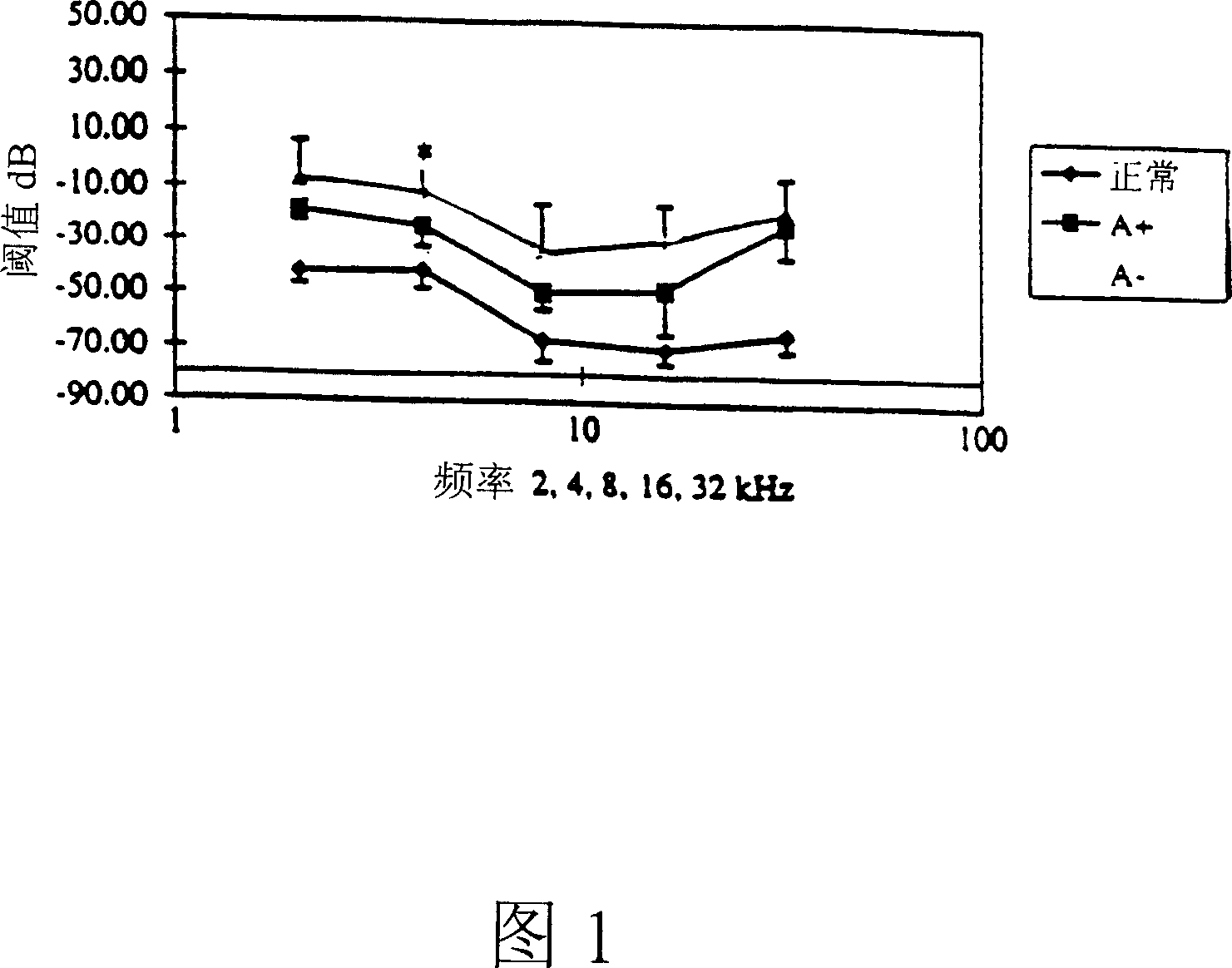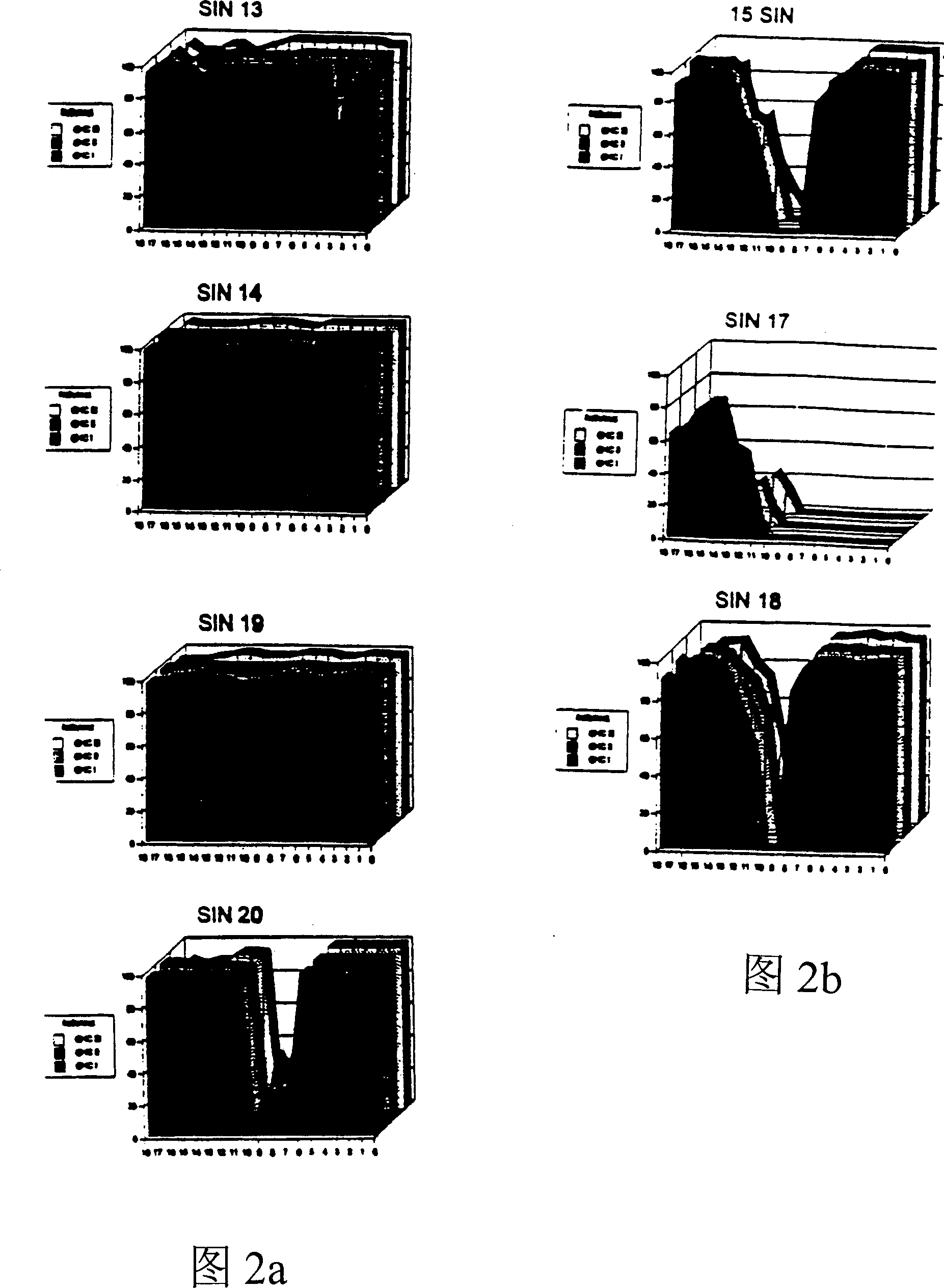Method for preventing/treating damage to sensory hair cells and cochlear neurons
A drug and auditory technology, applied in the prevention and/or treatment of hearing loss and loss of balance sense, protection of sensory hair cells and cochlear neurons, can solve problems such as ineffective prevention or treatment of vestibular system hair cell damage
- Summary
- Abstract
- Description
- Claims
- Application Information
AI Technical Summary
Problems solved by technology
Method used
Image
Examples
Embodiment 1
[1141] Example 1 - Prevention of hearing damage / cell death
[1142] Eight pigmented guinea pigs (200-300 g) were tested for baseline hearing by ABR as described below. ABR is a measure of auditory function. Four animals were treated with subcutaneous injection (s.c.) of the compound represented by formula II (1 mg / kg) once a day, starting 24 hours before the noise trauma and continuing until the 21st day after exposure to the noise trauma. 4 animals were used as controls and received vehicle only (the 4th animal died while under anesthesia). All animals were exposed to traumatic octave noise at a center frequency of 4.0 kHz and 125 dB SPL (sound pressure level) for 105 minutes.
[1143] ABR thresholds were measured again 21 days after exposure to noise trauma. ABR thresholds were determined using System II hardware and BioSig software (Trucker Davis Technology). Stimulation of an lms cos2 rise and fall and an 18 ms plateau was delivered at a frequency of 20 Hz with a Beyer...
Embodiment 2
[1152] Example 2 - Prevention of hearing damage / apoptosis
[1153] noise damage
[1154]Mature Dunkin-Hartley female guinea pigs (body weight 300-500 g) were exposed to octave band noise for 6 hours as described in Example 1, center frequency 4.0 kHz, 120 dB SPL, 4 animals each time. Fragmented hair cell nuclei from noise-exposed cochleae were assessed immediately and at days 1, 2, 4, 6, 8, and 14 after noise exposure. Noise-exposed and non-noise-exposed guinea pigs were decapitated under deep anesthesia, and the inner ear was perfused with 4% paraformaldehyde in PBS solution, and then processed into 5 mm thick paraffin-embedded sections (YliKoski et al., "Aural Res. (Hear Res) 65:69-78, 1993; Ylikoski et al., Hearing Research (Hear Res) 124:17-26, 1998). TUNEL-staining was performed as described below. DNA fragmentation was also detected by DAPI nuclear counterstaining (see below). In addition, trauma-induced nuclear fragments were detected by morphological analysis of th...
Embodiment 3
[1173] The protective effect of the compound shown in embodiment 3-formula II to neomycin in neonatal rat cochlear explant
[1174] The compound represented by formula II can reduce the loss of cochlear sensory hair cells caused by neomycin in vitro. The effect of the compound represented by formula II on neomycin-induced hair cell degeneration was determined in organ cultures of neonatal Organ of Corti.
[1175] cochlear culture
[1176] The lower half of the cochlea containing the basal and middle turns was excised from 2-day postnatal Wistar rats. Cultures were maintained on nuclear microporous filter paper (0.1 mm pore size; Pleasanton, CA) placed on metal grids in F12 broth (Life Technologies, Gaithersburg, MD) containing 15% fetal bovine serum (Life Technologies). After a 2 hour stabilization period, the explants were exposed to 100 mM neomycin sulfate (Sigma, St Louis, MO) for 48 hours. 500 nM of the compound represented by formula II was added at the beginning of th...
PUM
| Property | Measurement | Unit |
|---|---|---|
| melting point | aaaaa | aaaaa |
Abstract
Description
Claims
Application Information
 Login to View More
Login to View More - R&D
- Intellectual Property
- Life Sciences
- Materials
- Tech Scout
- Unparalleled Data Quality
- Higher Quality Content
- 60% Fewer Hallucinations
Browse by: Latest US Patents, China's latest patents, Technical Efficacy Thesaurus, Application Domain, Technology Topic, Popular Technical Reports.
© 2025 PatSnap. All rights reserved.Legal|Privacy policy|Modern Slavery Act Transparency Statement|Sitemap|About US| Contact US: help@patsnap.com



